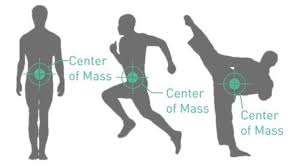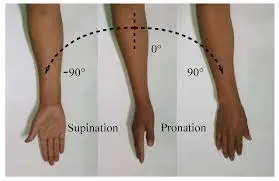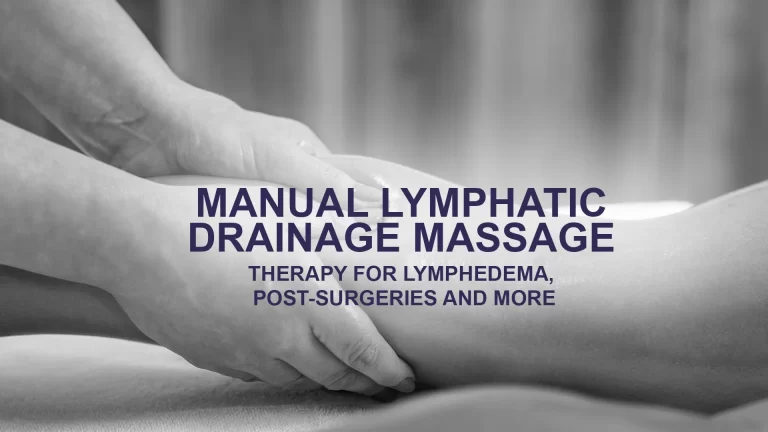Active Cycle of Breathing Technique (ACBT)
Table of Contents
Introduction of Active Cycle of Breathing Techniques (ACBT)
- The Active Cycle of Breathing Techniques (ACBT) is an active breathing technique performed by the patient and can be used to mobilize and clear excess pulmonary secretions and commonly increase lung function.
- It is a flexible method of treatment that can be used in conjunction with positioning and adapted for utilization with most patients. Each component can be used individually or as part of the Active Cycle of Breathing Techniques (ACBT) cycle depending on the patient’s problem.
- Once Active Cycle of Breathing Techniques (ACBT) has been taught, the patient can be encouraged to use it independently without the supervision of the physiotherapist. This exercise does not need the use of any special equipment.
- The technique can be performed in any breath-enhancing position and no equipment is needed. When used for limpid secretions, it may also be effective when performed in the shower, where steam can help with the humidification of the airways.
- The flexibility of the regimen (the number of deep breaths, the number of huffs, and the length of the periods of breathing control) and the order of the components vary with the patient’s condition and should be adapted to suit the individual.
- Each component plays a key role in the limpid of secretions. A longer period of breathing control is generally needed in the presence of wheezing, shortness of breath, an irritable cough, and anxiety.
It is used to:
- Loosen and clear secretions from the lungs. These assists reduce the risk of chest infections.
- Increase ventilation in the lungs.
- Improve the effectiveness of cough.
Active Cycle of Breathing Techniques (ACBT) consists of three (3) main phases:

- Breathing Control
- Deep Breathing Exercises or Thoracic Expansion Exercises
- Huffing or Forced Expiratory Technique (FET).
- The technique can be modified maintaining to the condition of the patient. Additionally, a manual technique (MT) or positive pressure can be added if and when indicated, to create a more complex cycle to assist improve the removal of secretions in the lungs. this may involve percussion or expiratory vibrations.
- A randomized control trial showed the positive effects of active cycle breathing technique (ACBT) along with routine chest physiotherapy on arterial oxygenation, heart rate, and pain perception following Coronary Artery Bypass Surgery (CABG).
Breathing Control
- Breathing control is used to relax the airways and relieve the symptoms of wheezing and tightness which normally occur later in coughing or breathlessness.
- It is the resting period between the more active areas of the technique. Encouraging the patient to close their eyes while performing breathing control can also be beneficial in assisting to promote relaxation. It is very important to use breathing control in between the more active exercises of the active cycle breathing technique (ACBT) as it allows for the relaxation of the airways.
- Breathing Control can also help when one is experiencing shortness of breath, fear, signs of bronchospasm, anxiety, or is in panic. The length of time spent performing breathing control may differ depending on how breathless the patient feels.
- When using this technique with a patient as part of the active cycle breathing technique (ACBT), the patient may be instructed to usually take 6 breaths.
Instructions to patient:
- Breathe in and out gently through your nose if you can. If you cannot, breathe through your mouth instead(the patient breathes according to his own rate).
- If you breathe out through your mouth, it is best to use breathing control with ‘pursed lips breathing.
- Try to let go of any tension in your body with each breath out and retain your shoulders relaxed.
- Gradually try to create the breaths slower.
- Try closing your eyes to assist you to focus on your breathing and relaxing.
- Breathing control (BC) should continue until the person feels ready to progress to the other stages in the cycle.
Deep Breathing Exercises or Thoracic Expansion Exercises
- Deep breathing/thoracic expansion exercises are deep breathing exercises that focus on inspiration and assist to loosen secretions in the lungs. Inspiration is active and usually combined with a three-second, end-inspiratory hold previous a passive, relaxed, and unforced expiration.
Instructions to patient:
- Try to retain your chest and shoulders relaxed.
- Take a long, steady, and deep breath in, through your nose if you can.
- At the end of the breath in, hold the air in your lungs for 2-3 seconds previous breathing out (this is known as an inspiratory hold).
- Breathe out gently and relaxed, such a sigh. Do not force the air out.
- Repeat three-five times. If the patient feels light-headed then it is important that they revert back to the breathing control (BC) phase of the cycle.
- To facilitate maximal inspiration, and proprioceptive feedback, the therapist, or patient, placing their hands on the thoracic cage, can be beneficial. This has been associated with improved chest wall movement and improved ventilation.
- A breath hold can be added to a deep breath to compensate for asynchronous ventilation which may be present in certain respiratory conditions due to sputum retention and/or atelectasis.
Huffing or Forced Expiratory Technique
- This is a stratagem utilized to move secretions, mobilized by deep breathing/thoracic expansion exercises, downstream towards the mouth. A huff is exhaled through an open mouth and throat instead of coughing.
- Huffing assists move sputum from the tiny airways to the larger airways, from where they are removed by coughing as coughing alone can not remove sputum from tiny airways. When originally taught, the patient is instructed to take a medium breath in and to breathe out with mild to moderate force and extended expiratory flow, with the glottis open.
- The length of the huff and force of contraction of the muscles of expiration should be altered to optimize the clearance of secretions by maximizing airflow.
There are 2 types of huff:
- Medium Volume Huff
- High Volume Huff.
Medium Volume Huff
- This assists to move secretions that are lower down in your airways.
- Take a normal-sized breath in and then an active, long breath out until your lungs feel completely empty. Imagine you are difficult to steam up a mirror.
High Volume Huff
- This assists to move secretions in your upper airways.
- Take a deep breath in, open your mouth wide and huff out fastly.
- Only perform one-two huff together, as repeatedly huffing can make your chest tight.
- Listen for crackles when you huff, If you can hear these, you may now require to cough and clear secretions; try to spit them out into a tissue or a sputum bowl. Try to avoid excessive coughing as this may decrease how effective the technique is and make it excessively tiring.
- Repeat the whole cycle for about ten minutes or until the chest feels clearer.
- Small long huffs move sputum from low down into the chest whereas big short huffs move sputum from higher up into the chest, so use this huff when it feels ready to come out, yet not before; huffs work via dynamic compression.
Coughing
- Coughing should be incorporated if huffing alone does not limpid your sputum. However, if it does limpid your sputum, then you may not need to cough.
- It is very important to avoid long bouts of coughing as these can be very tiring and may create you feel breathless, or create your throat or chest sore or tight. You should only cough if the sputum can be limited easily, if not, return to the start of the cycle.
Indications
- Post-surgical/pain (rib fracture/ICC)
- Chronically increased sputum production eg in Chronic bronchitis, cystic fibrosis
- Acute increase sputum production
- Poor expansion
- Sputum Retention
- SOBAR/SOBRE
- Cystic Fibrosis
- Bronchiectasis
- Atelectasis
- Respiratory muscle weakness
- Mechanical ventilation
- Asthma
- Increased breathing rate/effort
- Audible rattling in airways
- Palpable secretions.
Precaution
- It is important to constantly assess for dizziness or increased shortness of breath throughout the active cycle breathing technique (ACBT).
- If a patient feels dizzy during deep breathing, decrease the number of deep breaths taken during each cycle and return to breathing control to decrease dizziness.
- Inadequate pain control where required.
- Bronchospasm.
- Acute, unstable head, neck, or spinal surgery.
Contraindications
- Patients not spontaneously breathing.
- Unconscious patient.
- Patients who are unable to follow instructions.
- Agitated or confused.
Positioning
- Active cycle breathing technique (ACBT) can be performed in sitting or in a postural drainage position. Initially, you could start in a sitting position until you are comfortable and confident to try different ones.
- Extensive evidence helps its effectiveness in sitting or gravity-assisted positions. Although, the better position for you to do the active cycle breathing technique (ACBT) will depend on your medical condition and how well it works for you.
- When sitting, maintain a good breathing pattern with relaxed shoulders and neck, and back supported as this promotes the function of the diaphragm and lower stress on the musculoskeletal. Whatever position you use make sure you are comfortable, well-supported, and relaxed.
- The active cycle breathing technique (ACBT) may be performed with or without an assistant providing vibration, percussion, and shaking. Self-percussion/compression may be involved by the patient.
- It has been looked at that the horizontal, side-lying position is as effective as the head-down tipped position and is preferred by individuals.
Duration and Frequency
- Duration for active cycle breathing technique (ACBT) should be for about 10 minutes and ideally until your chest feels clear of sputum.
- You may need to do an active cycle breathing technique (ACBT) only once or twice a day when you are well. When you have more sputum, you may need to do it more sometimes. When you are unwell or have more sputum, you may require to do shorter and/ or more frequent sessions.
Possible side effects
- Bronchospasm with hyper-reactive airways.
- Decreased oxygen saturations/ shortness of breath.
- Cardiac arrhythmias.
- Atelectasis.
- Fatigue.
FAQs
The active cycle of breathing technique (ACBT) combines different breathing techniques that help clear mucus from the lungs in three phases. The first phase helps you relax your airways. The second phase helps you to get air behind mucus and clears mucus. The third phase helps force the mucus out of your lungs.
Instructions to patient:
Try to keep your chest and shoulders relaxed.
Take a long, slow, and deep breath in, through your nose if you can.
At the end of the breath in, hold the air in your lungs for 2-3 seconds before breathing out (this is known as an inspiratory hold).
Breathe out gently and relaxed, like a sigh.
Huffing, also known as huff coughing, is a technique that helps move mucus from the lungs. It should be done in combination with another ACT. It involves taking a breath in, holding it, and actively exhaling.
Coughing is the natural way of getting mucus out of the lungs. Huffing is a gentle way of coughing. Your child will perform huffs at two different levels. Low-lung volume huffs help move mucus from the smaller airways lower in the lungs to the larger airways.
5 Gymnastics Breathing Techniques
Deep breathing. A simple way to calm your body and mind is to breathe deeply and slowly.
Belly breathing. Diaphragmatic or belly breathing slows your heartbeat and can lower blood pressure.
Extend your exhale.
Synced breathing.
Spot focus.
Slow diaphragmatic breathing is one relaxation skill used in CBT.
one to two times a day
Clearing your chest should be done one to two times a day when you feel well.
THE FOG TEST. The high carbon content of diamonds makes them excellent conductors of heat. If you huff a breath of warm, moist air on a diamond, a fog will appear. The fog should dissipate immediately if it’s a real diamond. If not, it is likely a “fake” diamond made of glass or cubic zirconia.
It is not physically possible to cough up a lung, but there are a number of ways that violent coughing can hurt your body, from coughing up blood to cracking your ribs. If you’ve had a persistent cough for more than a few weeks, call your doctor.







